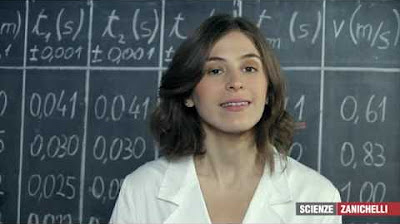Work and Energy | Grade 8 Science DepEd MELC Quarter 1 Module 3 Part 2 Potential Energy
Summary
TLDRThis video script delves into the physics of roller coasters, illustrating how they utilize gravity to convert potential energy to kinetic energy without an engine. It explains the concepts of potential and kinetic energy, focusing on mechanical energy's two forms. The script further explores gravitational potential energy, providing the formula \( PE = mgh \), and demonstrates how to calculate it with examples. It concludes by emphasizing the importance of understanding these energy forms and invites viewers to learn more about kinetic energy in a subsequent video.
Takeaways
- 🎢 Roller coasters don't use engines; they rely on gravity for motion, utilizing the principles of potential and kinetic energy.
- 🌐 Energy, measured in joules, can change forms but cannot be created or destroyed, transitioning between potential and kinetic energy during a roller coaster ride.
- 🔋 Potential energy is the stored energy due to an object's position, ready to be released, and can be categorized into chemical and physical potential energy.
- 💪 Chemical potential energy is found in substances that can undergo chemical changes, such as food, batteries, and gasoline.
- 📚 Physical potential energy, often referred to as gravitational potential energy, is due to the work done against gravity to elevate an object.
- 📐 The formula for calculating potential energy is mass times gravitational acceleration times height (PE = mgh) and is expressed in joules.
- 📈 Potential energy depends on the difference in height between the initial and final positions, independent of the path taken.
- 🔍 The force of gravity is always directed downward and is the work done against this force when lifting an object, which results in potential energy gain.
- ⚖️ Work done in lifting an object is equal to the potential energy gained by the object, and can be calculated using the same formula for potential energy.
- 📘 In problems involving potential energy, you can solve for unknown quantities such as height, mass, or potential energy itself by rearranging the formula.
- 🔑 The takeaways from the script emphasize the importance of understanding the concepts of potential and kinetic energy, and how they relate to the force of gravity and the work done by or against it.
Q & A
What is the primary force that a roller coaster relies on to move along the track?
-A roller coaster primarily relies on gravity to move along the track, as it does not have an engine.
What are the two types of energy that are involved in the operation of a roller coaster?
-The two types of energy involved in a roller coaster's operation are potential energy and kinetic energy.
What is energy in the context of the script?
-In the context of the script, energy is the ability to do work and has the same unit, which is the joule.
What is potential energy and why is it called so?
-Potential energy is the stored energy due to the position of an object. It is called potential energy because it has the energy that is ready to be released.
How many types of potential energy are mentioned in the script, and what are they?
-The script mentions two types of potential energy: chemical potential energy and physical (gravitational) potential energy.
What is chemical potential energy, and where is it found?
-Chemical potential energy is found in substances that store energy at a sub-microscopic level and has the readiness to undergo a chemical change, such as in the food we eat, batteries for gadgets, and gasoline for cars.
What is the formula for calculating gravitational potential energy?
-The formula for calculating gravitational potential energy (PE) is PE = mgh, where m is mass in kilograms, g is acceleration due to gravity (9.8 m/s²), and h is height in meters.
How does the unit for potential energy relate to the unit for work?
-The unit for potential energy is kilogram meters squared per second squared, which is equivalent to a newton meter or a joule, the same unit as work.
What is the relationship between work done and change in potential energy?
-Work done in lifting an object is equal to the potential energy gained by the object, and the formula for work is equal to the change in potential energy.
How can you calculate the height of an object if you know its potential energy and mass?
-To calculate the height, divide the potential energy by the product of the object's mass and acceleration due to gravity (mgh).
What is the mass of a book if it has a potential energy of 10 joules and is placed 1 meter above the ground?
-To find the mass, divide the potential energy (10 joules) by the product of acceleration due to gravity (9.8 m/s²) and the height (1 meter), which would give a mass of approximately 1.02 kilograms.
Outlines

This section is available to paid users only. Please upgrade to access this part.
Upgrade NowMindmap

This section is available to paid users only. Please upgrade to access this part.
Upgrade NowKeywords

This section is available to paid users only. Please upgrade to access this part.
Upgrade NowHighlights

This section is available to paid users only. Please upgrade to access this part.
Upgrade NowTranscripts

This section is available to paid users only. Please upgrade to access this part.
Upgrade NowBrowse More Related Video

"Our World: Potential and Kinetic Energy" by Adventure Academy

How Roller Coasters Use Energy - An Introductory Lesson

LABORATORIO La conservazione dell'energia meccanica RUFFO ZANICHELLI

What Is Energy? | Neil deGrasse Tyson Explains…

What is Kinetic and Potential Energy? [Stored Energy & Energy of Movement]

Usaha Energi Fisika Kelas 10 - Part 7 : Hukum Kekekalan Energi Mekanik
5.0 / 5 (0 votes)